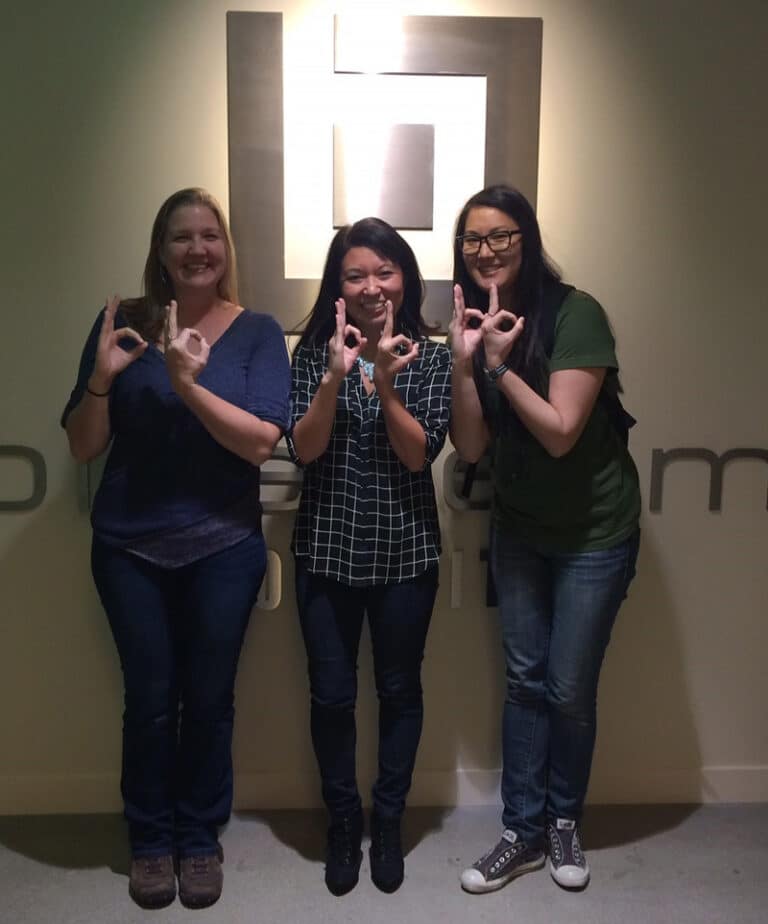Erika Saniano can predict the future.
Well, not exactly. But for 40 hours or so each week, Saniano tries her best to look deep into the crystal ball of how Bluebeam’s financial future can help make the company’s ambitions today come to life.
As a senior financial planning and analysis (FP&A) manager for the construction technology company, Saniano and her team are responsible for bridging the gap between what investments are needed to seed the company’s growth and its financial forecast in the quarters and year ahead.
It’s a job that puts Saniano in the unique position of knowing where almost every dollar at the Pasadena, California-based company is spent, from engineering to product marketing to IT and customer support, and it gives her a front-row seat for just about everything that the company is working toward in a given year to make its evolving suite of technology consistently invaluable to the construction industry.
“In FP&A, since you’re trying to predict the future, you really need help from the entire company,” said Saniano, who is based in Los Angeles. “My team and I talk to every budget owner, which is about 65 people, from every department at Bluebeam. Tell me what you’re striving for as a budget owner, and I can help figure out what our budget needs to be to make those plans a reality.”
The language of numbers
Saniano’s path to becoming one of the lead financial analysts and planners for a global technology company took an untraditional route. In fact, if Saniano had stuck to the field she initially chose in college, she might be writing code as a member of Bluebeam’s engineering team, not managing the company’s finances.
Saniano grew up in Vernon Hills, Illinois, a suburb about 40 miles north of Chicago. Her mother was born and raised in Mexico, and her father was born and raised in Japan. The child of two non-native English speakers, Saniano said the family didn’t naturally communicate with words. “But when it came to math, we were always right, because it was the same language,” Saniano said.
Math came natural to Saniano as a result. “There’s always a right answer,” she said. “Words or paragraphs can be subject to interpretation—but with math, you’re either right or you’re wrong.”
Saniano attended DePaul University on Chicago’s northside. She double majored in mathematics and computer science, though neither subject was instrumental in determining her eventual career. Instead, it was the odd jobs Saniano held while attending DePaul that served as the catalyst for the field she eventually made a career out of—accounting.
“I worked as an auditor at a shipping store, I worked at a hotel as a receptionist and as a restaurant cashier,” Saniano said. One of the jobs asked Saniano to pay some invoices, and the accounting duties began to snowball. Suddenly, Saniano started taking on low-level accounting jobs and working her way up, each time starting at the bottom and, again, working into some sort of managerial role.

That bottom-up mentality helped Saniano accrue accounting jobs in a variety of industries, from gigs with Allied Business Schools to Clear Channel Radio to fast-casual dining chain Cosi and dating website eHarmony.
In 2015, Saniano started as a senior accountant with an up-and-coming technology company, Bluebeam—again starting at a level that was technically below where she left off at her previous career stop.
“I talked to Rich Lee, who was the founder of the company, as part of the interview, and he questioned it: ‘Why would you want to take a step down?’” Saniano recalled. “When it comes to companies like this, I like to look at what they have originally. I start myself at a lower level, look at what you have, and what can I fix? I like to understand the company first, and then work my way up.”
Securing opportunity
Accounting, like math growing up, appealed to Saniano because of its unambiguous characteristics. It’s a fact-oriented, rules-based discipline. Money in, money out. Everything that happens in accounting is clearly recorded. The discipline also relies heavily on routine. Month to month, quarter to quarter, year to year, the same patterns take place each time period.
To Saniano, accounting’s characteristics also represented security. “I always had multiple jobs when I was young, because I was always afraid of not having a secure life,” Saniano said, adding that she also observed her parents deal with bouts of financial insecurity. “That’s why, when I got into accounting, I was like, ‘This seems secure.’”
Regardless of a company’s performance, it will always need accountants. “Even when companies shut down, the accountants are the last ones there shutting the door,” Saniano said. “So accounting just stuck with me where I’m like, ‘This is a safer path for me.’ Oddly enough, I was really good at it, too. So why wouldn’t I stay with it?”
Like her past roles, Saniano continued to work her way up as an accountant at Bluebeam. Less than a year after being hired, Saniano was promoted to manager. And for two more years, Saniano thrived in the rules-based, routine-oriented world of recording revenues and expenses, and helping manage annual regulatory audits for the growing company, which by this time was now owned by German conglomerate Nemetschek Group, adding to the accounting team’s complex responsibilities.
Time for change
Yet, as time went on, Saniano said she wanted a change. “I had been doing accounting for so long,” Saniano said. “I wasn’t bored with it, but I just wanted something different.”
Luckily, Bluebeam was on the verge of creating a new team dedicated to financial planning. If accounting is responsible for recording what is happening—money in, money out—financial planning is the opposite. “FP&A is future-looking,” Saniano said. It’s forecasting a company’s future financial performance and planning budgets of spending for the year accordingly.
At any other company, Saniano may have never been considered for a role in FP&A. Accounting and finance, while related, are considered completely separate and different disciplines to the people who work in them, Saniano said. The fields nowadays require different degrees and experience; transitioning from one to the other is extremely uncommon.
Bluebeam, after listening to Saniano say she was interested in making the change, didn’t follow such conventions and gave Saniano a chance on its new FP&A team. And just like with her accounting jobs prior, Saniano would again start at a lower level and work her way up.
Saniano said the fact that Bluebeam would even give her the opportunity speaks to the people-focused character of the company, which she added has been a big reason why she’s remained with Bluebeam for so long.
“I feel like everyone knows Bluebeam is great,” Saniano said. “But they don’t know those back stories. Well, there are opportunities where you can move roles and try something new if you’re interested. I think that’s really rare. I’m really happy that I got the opportunity here at Bluebeam to do that.”
Today, Saniano lives in a world that is the complete opposite of the one she came up in professionally. Although there are still routines and rules around budgets, reporting and planning, being in FP&A is far more nuanced and creative.
Saniano spends most of her time not tabulating credits and debits alone in her office but communicating across the globe with Bluebeam’s different leaders, listening to their goals and helping them procure the financial resources needed to allow their teams to operate and contribute to the company’s continued growth each year.
The role has allowed Saniano to expand her overall business acumen. By interacting with executives and leaders in different business areas and helping them achieve their goals, she’s also developed valuable relationships with colleagues all over the world.
“I like talking with the rest of the company,” Saniano said. “Now, moving into FP&A, I’m talking to high-level people about where we think we’re going in the future as a company—and talking about the future is fun.”





